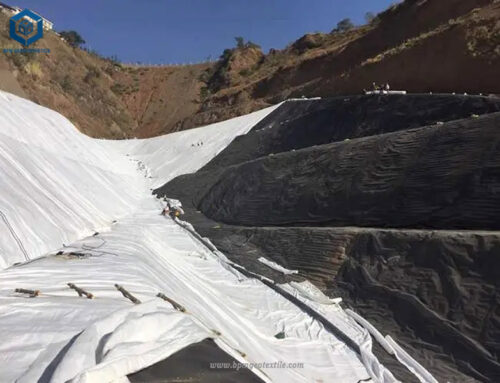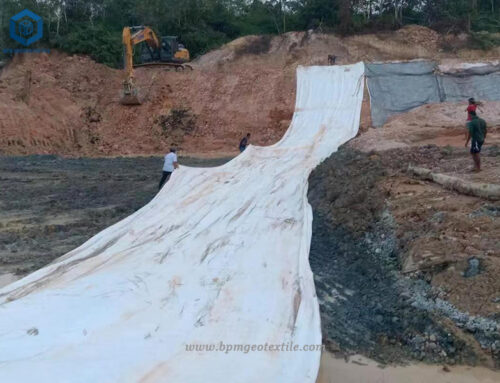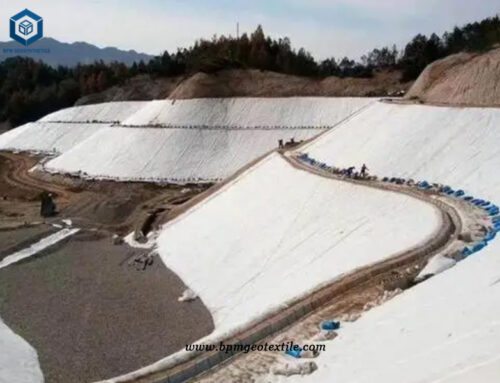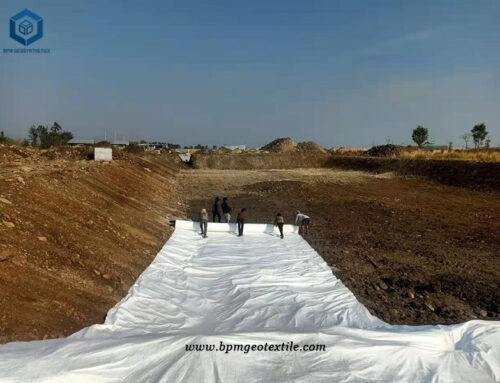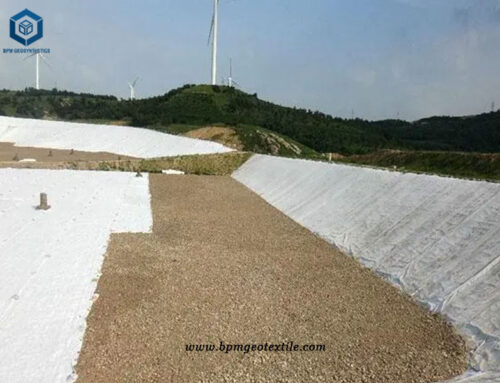Geotextile Malaysia is the non woven geotextile widely used in railway, highway and other engineering projects in Malaysia. Its unique physical and mechanical properties make it widely used in engineering, helping to improve the quality and stability of engineering.
The East Coast Rail Link (ECRL/East Rail) is a railway that Malaysia intends to build on the Malaysian Peninsula. The railway construction terrain is mostly coastal depressions with flat terrain. The surface layer is soft clay, and geotextile is needed to improve the bearing capacity and stability of the railway foundation, thereby improving the safety and service life of the railway. Through bidding, BPM successfully became a geotextile supplier for the ECRL railway project, providing 5000000 square meters of PET geotextile for the first batch of projects.
Specifications of Non woven geotextile Malaysia for Railway Construction
- Product – White Filament Nonwoven Geotextile
- Weight/ square meters – 200g
- Size – 6m*100m each Roll
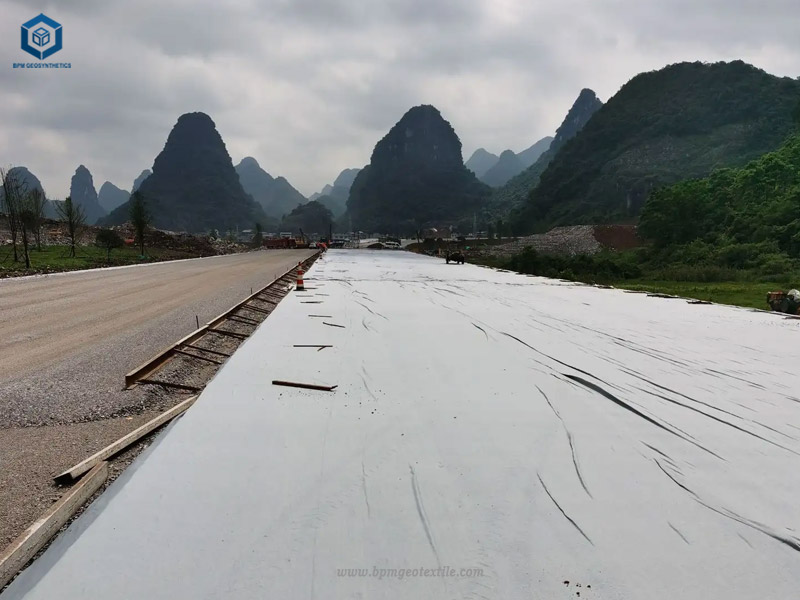
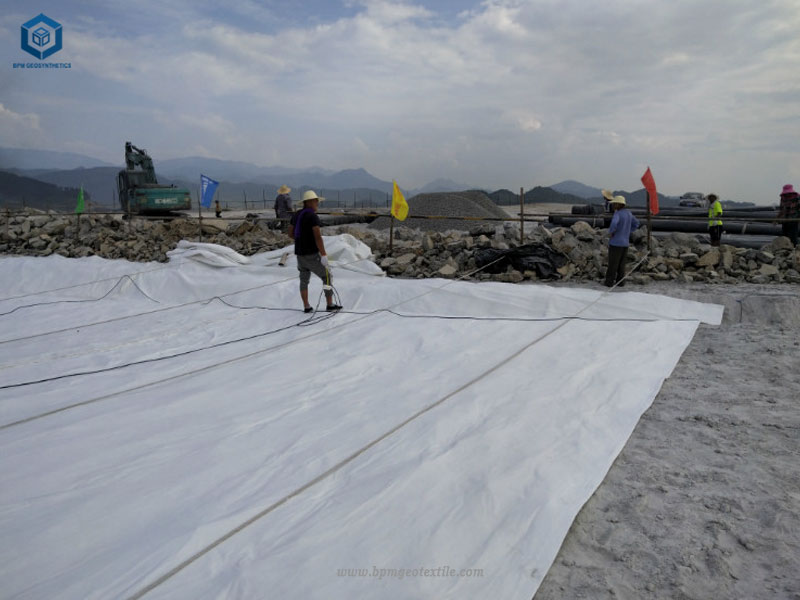
Strengthening mechanism of non-woven geotextile in railway roadbed construction
1. Improve the bearing capacity and stability of the foundation
Under the load of the embankment, the frictional force between the non woven geotextile Malaysia and the foundation soil transfers the tensile stress in the soil to the reinforcement body, which bears tensile force, while the soil between the reinforcement bars bears pressure and shear stress, enabling both the reinforcement body and the soil body in the reinforced soil to fully utilize their respective potential, thus forming a cohesive and embedded effect between the reinforcement body and the soil body, allowing the soil body to be compacted, enhancing the integrity and continuity of the soil body, Limiting the lateral deformation of the soil can improve the bearing capacity and stability of the foundation soil.
2. Improve the integrity of the roadbed
Usually, filament non woven geotextile and sand cushion are used as a layer together, which has different stiffness from the embankment itself and soft soil foundation. Through this layer, the embankment load is diffused, adjusted, and transmitted to both sides of the reinforced sand cushion to reduce the stress at the center of the roadbed and increase the stress on both sides of the soil, thereby reducing the settlement at the center of the roadbed and increasing the settlement on both sides. Therefore, filament non woven geotextile Malaysia is not only the drainage surface during the consolidation of soft soil, It is also a flexible raft foundation of the embankment, which can make the foundation deform evenly.
3. Reduce settlement
On the one hand, due to the tensile stress effect of white geotextile fabric, the reinforced cushion layer has a greater stiffness, which can diffuse the embankment load to both sides, resulting in a reduction in the additional stress of the soil below the non woven geotextile interface, thereby reducing the vertical compression deformation of the soil. On the other hand, due to pre tension and differential settlement, the tensile deformation of the geotextile fabric is caused, and this tensile stress needs to be balanced by the interface shear stress. Under the action of this interface shear stress, This causes a certain amount of uplift deformation in the settlement area of the roadbed, thereby offsetting some of the settlement of the roadbed.
The main principles of the drainage and filtration mechanism of geotextile
- Permeability.Geotextiles are usually composed of polymers or fibers, with gaps between these materials. These voids allow water to pass through the geotextile for drainage. The permeability of white geotextile fabric is controlled by its pore structure, pore size, and fiber layout.
- Prevent soil particles from passing through.Although geotextiles have certain permeability, they can effectively prevent soil particles from penetrating. This is because the fiber or polymer mesh of geotextile can intercept and prevent soil particles from entering the geotextile structure, thereby maintaining the integrity of the geotextile.
- Layered filtration.Geotextiles are usually used in combination with filtration materials of different particle sizes to achieve better filtration effects. Water enters the filter material through geotextile, while soil particles are prevented. This helps to maintain a clear interface between geotextile and soil, and improves drainage and filtration efficiency.
- Permeability control.The permeability of geotextile can be adjusted according to specific engineering needs to adapt to different soil types and engineering conditions. Usually, engineers choose appropriate types and specifications of geotextiles to ensure the required drainage and filtration performance.
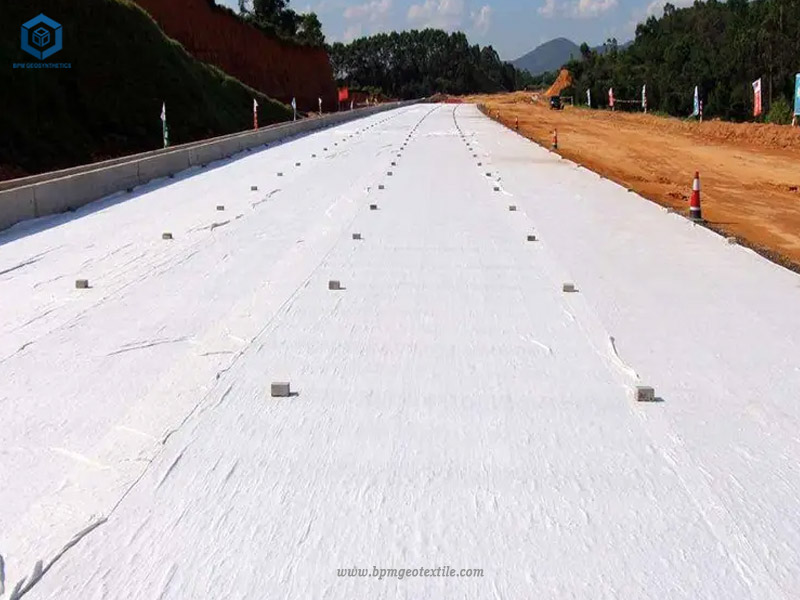
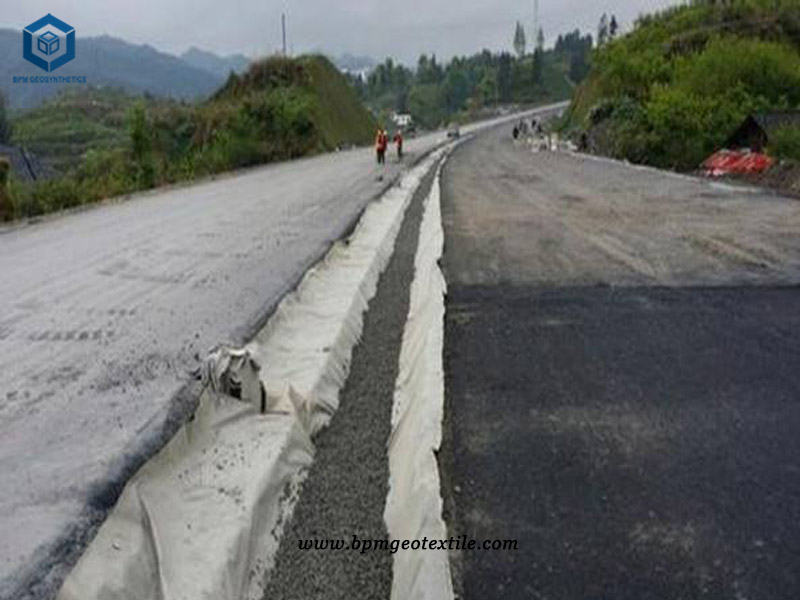
The Role of Filmanet Geotextiles in the ECRL Railway Project in Malaysia
Increase the stability of railway engineering. The tensile strength and anti leakage ability of geotextiles help to increase the overall stability of railway engineering. It can reduce roadbed settlement and deformation, reduce the impact of loads on railways, and improve the reliability of railway lines.
Extending the Service Life of Railway Engineering. The application of geotextile can extend the service life of railway engineering and reduce the need for maintenance and repair. This is an important economic benefit for railway management agencies, as maintenance and repair are usually expensive.
Reduce maintenance costs. By increasing the stability and durability of railway engineering, geotextiles can reduce maintenance costs. Reducing maintenance frequency and complexity can help save time and resources.
Improving railway safety. A stable railway roadbed and road surface are crucial for the safety of train operation. The application of geotextile helps to prevent potholes, cracks, and lateral erosion, improving the safety of railways.
Permeability. Geotextiles Malaysia are usually composed of polymers or fibers, with gaps between these materials. These voids allow water to pass through the geotextile for drainage. The permeability of white geotextile fabric is controlled by its pore structure, pore size, and fiber layout.
Prevent soil particles from passing through. Although geotextiles have certain permeability, they can effectively prevent soil particles from penetrating. This is because the fiber or polymer mesh of geotextile can intercept and prevent soil particles from entering the geotextile structure, thereby maintaining the integrity of the geotextile.
Layered filtration. Geotextiles are usually used in combination with filtration materials of different particle sizes to achieve better filtration effects. Water enters the filter material through geotextile, while soil particles are prevented. This helps to maintain a clear interface between geotextile and soil, and improves drainage and filtration efficiency.
Permeability control. The permeability of geotextile can be adjusted according to specific engineering needs to adapt to different soil types and engineering conditions. Usually, engineers choose appropriate types and specifications of geotextiles to ensure the required drainage and filtration performance.

